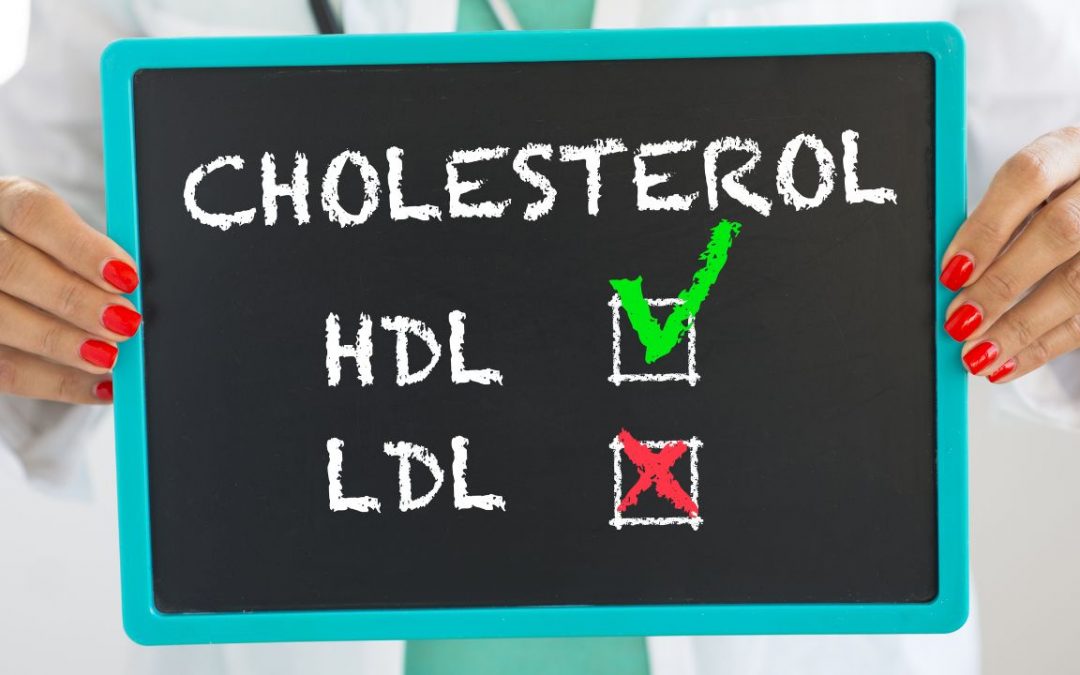There’s a lot of conflicting information about the role of cholesterol on well-being. It often has a bad reputation, but cholesterol is an essential part of cellular health. Let’s take a look at the different types of cholesterol and how you can obtain the best balance for your body.
What Is Cholesterol?
At the most basic level, cholesterol is a waxy lipid produced by your liver and found in your blood. There are two central types of cholesterol.
LDL or low-density lipoprotein
LDL cholesterol is the “bad cholesterol.” LDL cholesterol can build up on artery walls, leading to plaque formation, known as atherosclerosis. This, in turn, can lead to decreased blood flow to the heart muscle (a condition called coronary artery disease), decreased flow to the leg muscles (peripheral artery disease), or a heart attack or stroke due to abrupt closure of an artery in the heart or brain.
HDL or high-density lipoprotein (HDL)
HDL cholesterol is sometimes referred to as “good” cholesterol. HDL cholesterol removes “bad” cholesterol from the blood by returning it to the liver.
An easy mnemonic for telling them apart is to think that you want the number on your HDL blood tests to be higher and the number for LDL to be lower. Having a bad balance of HDL and LDL cholesterol doesn’t typically carry any symptoms until damage has started, so it’s important to have regular tests to monitor your cholesterol levels.
Risk Factors for Cholesterol Problems
High LDL cholesterol can dramatically raise your odds of heart attack, stroke, and heart disease. Having high LDL cholesterol levels is often the result of several different factors including:
- Smoking. It turns out cigarette smoke does more than damage your lungs. Studies show smoking can increase your odds of heart problems by up to 400%. Smoking both increases your LDL cholesterol and lowers your HDL. But smokers take heart. The risk of heart disease is cut in half just a year after quitting.
- Obesity. Being obese (having a BMI over 30) can change the way your body metabolizes cholesterol, leading to high levels of LDL cholesterol. Having a lot of fat around your waist carries the greatest risk.
- Genetics. Sometimes it’s hard to escape your genes, even if you do all the right things. The genetic cause of high LDL cholesterol is called familial hypercholesterolemia (FH). It’s important to note that only one in 250 people have FH. For most people with high LDL cholesterol, lifestyle is a big factor.
- A sedentary lifestyle. Exercise can raise your levels of HDL cholesterol, which in turn lowers LDL. Studies show that for people of normal weight, a lot of time playing video games and other sedentary activities correlates with low HDL and high LDL cholesterol levels.
- A diet high in processed foods. One study found that eating just two ounces of processed meats can raise your risk of heart disease by 42%.
How to Improve Your Cholesterol Levels
Improving your levels of HDL cholesterol lowers your cardiac risk. Here are some good steps to raise HDL cholesterol the natural way.
- Quit smoking and reduce or eliminate alcohol. Some studies show moderate alcohol consumption (one drink a day for women and two for men) can increase HDL cholesterol levels, but drinking does carry other risks. If you’re not able to consume alcohol at a moderate level, it’s often best to eliminate drinking.
- Exercise. The best activity is always the one you will keep doing, but research shows that high-intensity cardio and resistance training often have the best results for maintaining good cholesterol levels. If intense workouts aren’t your thing, no worries – moderate exercise also improves cholesterol ratios.
- Lose weight. Losing just a few pounds can lead to a marked increase in your HDL cholesterol levels. Of course, weight loss is a complex issue for many people, so you want to make sure you approach it in a sustainable, healthy manner.
- Look for healthy fats. When it comes to your cardiac health, fat isn’t necessarily a bad thing. One key is to look for fat that is high in omega-3 fatty acids, like salmon, sardines, chia seeds, and flax seeds. Food with monounsaturated fats, like avocados, nuts, and olive oil, also increases HDL cholesterol.
- Increase your fiber intake. Soluble fiber binds to LDL cholesterol in the lower intestine, and then “flushes” it out. Good sources of soluble fiber include oats, psyllium, apples, and beans.
- Supplement smartly. Several supplements have been proven to improve cholesterol levels-the one I like is
- Citrus bergamot contains antioxidants that can raise HDL cholesterol levels.
- Take a look at your medicine cabinet. Some medications have the unwanted side effects of raising LDL cholesterol, including beta blockers, birth control pills, retinoids (compounds that are derived from Vitamin A), some steroids, and anticonvulsants.
Confused about cholesterol? Let’s take a deep dive into your lipid panel and assess your current heart health.
Sources
Chadwick AC, Holme RL, Chen Y, Thomas MJ, Sorci-Thomas MG, Silverstein RL, Pritchard KA Jr, Sahoo D. Acrolein impairs the cholesterol transport functions of high-density lipoproteins. PLoS One. 2015 Apr 7;10(4):e0123138. doi: 10.1371/journal.pone.0123138. PMID: 25849485; PMCID: PMC4388475.
Mc Auley, M. (2020). Effects of obesity on cholesterol metabolism and its implications for healthy aging. Nutrition Research Reviews, 33(1), 121-133. doi:10.1017/S0954422419000258
Crichton GE, Alkerwi A. Physical activity, sedentary behavior time and lipid levels in the Observation of Cardiovascular Risk Factors in Luxembourg study. Lipids Health Dis. 2015 Aug 11;14:87. doi: 10.1186/s12944-015-0085-3. PMID: 26256803; PMCID: PMC4530482.
Bronzato S, Durante A. A Contemporary Review of the Relationship between Red Meat Consumption and Cardiovascular Risk. Int J Prev Med. 2017 Jun 1;8:40. doi: 10.4103/ijpvm.IJPVM_206_16. PMID: 28656096; PMCID: PMC5474906.
Mann S, Beedie C, Jimenez A. Differential effects of aerobic exercise, resistance training and combined exercise modalities on cholesterol and the lipid profile: review, synthesis and recommendations. Sports Med. 2014 Feb;44(2):211-21. doi: 10.1007/s40279-013-0110-5. PMID: 24174305; PMCID: PMC3906547.
Van Gaal LF, Wauters MA, De Leeuw IH. The beneficial effects of modest weight loss on cardiovascular risk factors. Int J Obes Relat Metab Disord. 1997 Mar;21 Suppl 1:S5-9. PMID: 9130034.
Gordon SM, Amar MJ, Jeiran K, Stagliano M, Staller E, Playford MP, Mehta NN, Vaisar T, Remaley AT. Effect of niacin monotherapy on high density lipoprotein composition and function. Lipids Health Dis. 2020 Aug 21;19(1):190. doi: 10.1186/s12944-020-01350-3. PMID: 32825822; PMCID: PMC7441610.
Nauman MC, Johnson JJ. Clinical application of bergamot (Citrus bergamia) for reducing high cholesterol and cardiovascular disease markers. Integr Food Nutr Metab. 2019 Mar;6(2):10.15761/IFNM.1000249. doi: 10.15761/IFNM.1000249. Epub 2019 Feb 28. PMID: 31057945; PMCID: PMC6497409.
Alizadeh-Navaei R, Roozbeh F, Saravi M, Pouramir M, Jalali F, Moghadamnia AA. Investigation of the effect of ginger on the lipid levels. A double blind controlled clinical trial. Saudi Med J. 2008 Sep;29(9):1280-4. PMID: 18813412.



